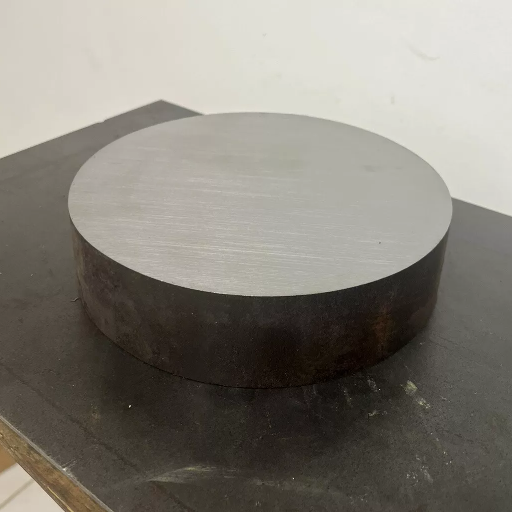9310 alloy steel is acknowledged for its hardness and resistance, making it a widely used material in different industries. In this article, we will give an extensive review of 9310 alloy steel by examining its main characteristics, typical applications, and comparing it with other common alloys steels. These points are important because they help us know what makes 9310 special among metals and when to use it based on our requirements. This manual suits all engineers, materials scientists or any person who loves metals especially 9310 alloy steel because there are many things that you can learn from here about this amazing stuff which may be useful for you someday
What is 9310 Alloy Steel?
Definition of 9310 Alloy Steel
It is broadly acknowledged that 9310 alloy steel is a low-alloy steel with excellent hardenability and toughness. Mostly consisting of iron, it has appreciable amounts of chromium, nickel and molybdenum that collectively enhance its strength as well as wear resistance. This specific alloy distinguishes itself by its high core strength and fatigue resistance; thereby making it the best choice for applications like gears, crankshafts and aerospace components under extreme stress. The distinctive combination of ingredients contained in this form of alloy ensures outstanding performance under hostile conditions, guaranteeing reliability and long life in critical industrial or mechanical environments.
Applications of 9310 Alloy Steel
Based on my experience, 9310 alloy steel is mainly utilized in high stress environments due to its remarkable toughness coupled with resistance to wear. The fatigue resistance is very crucial for manufacturing aerospace components such as gears and crankshafts which are commonly made from it though other common applications exist. Again, it is used heavily in the automotive industry where heavy-duty gears and shafts are required so that they can be tough enough to endure any extreme conditions. In addition, the oil and gas industry makes use of this type of steel extensively especially when it comes to tools and machinery used under tough conditions where it can withstand various operational environments. Therefore across these industries maintaining functionality over significant pressures on the material or wearing thereof makes this type of alloy preferred.
Key Characteristics of 9310 Steel
To summarize the major qualities of 9310 alloy steel:
Composition:
- Iron (Fe): The chief element.
- Chromium (Cr):1.00-1.45% -Increases corrosion and oxidation resistance.
- Nickel (Ni): 3.00-3.5% – Enhances toughness and hardenability.
- Molybdenum (Mo): 0.08-0.15% – Raises hardenability and strength.
Mechanical Properties:
- Tensile Strength: Approximately 931 MPa (135,000 psi) in hardened and tempered condition.
- Yield Strength: About 725 MPa (105,000 psi).
- Elongation: As a result of hardening and tempering, it is between 12-15%.
- Hardness: Fully hardened Rockwell C scale readings ranging from 58 to 63 numbers.
- Hardenability: It has exceptional hardenability that permits deep even hardness penetration to the core thus ensuring high core strength which gives a good impact resistance at room temperature.,
- Fatigue Resistance: Excellent fatigue resistance makes this material ideal for use in high-stress applications.
- Wear Resistance: For such components as gears or crankshafts, there is an excellent wear resistance due to the firmly balanced alloy constitution thereof.,
- Toughness: It still retains good toughness that allows it withstanding very significant impact loads without cracking.,
- Machinability: Usually machinability is fair but can be improved through proper heat treatment techniques.
- Thermal Properties: Balanced alloying elements give effective performance at various temperatures.,
The above technical parameters explain why critical, highly stressed applications prefer utilizing 9310 alloy steel because of its performance and dependability.
What is the Chemical Composition of 9310 Steel?
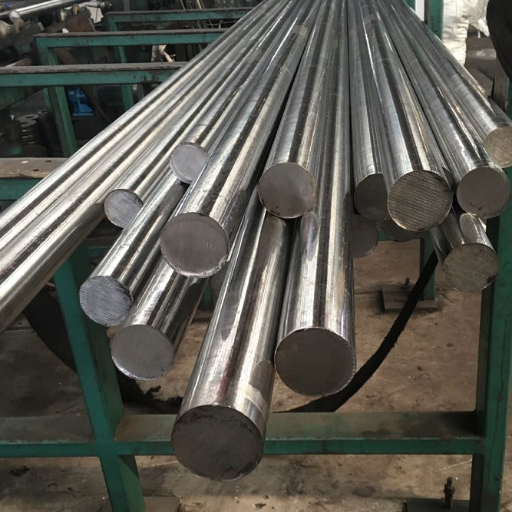
Elements of 9310 Steel
The alloy 9310 steel is characterized by its strength and high performance attributes, due mainly to its well-balanced chemical composition. The main elements in 9310 steel are as follows:
- Carbon (C): 0.07-0.13% – Gives hardness and strength.
- Manganese (Mn): 0.45-0.65% – Increases hardenability and tensile strength.
- Silicon (Si): 0.20-0.35% – Improves resistance to heat and strengthens.
- Chromium (Cr): 1.00-1.45% – Improves corrosion and oxidation resistance.
- Nickel (Ni): 3.00-3.5% – Raises toughness and hardenability.
- Molybdenum (Mo): 0.08-0.15% – Increases hardenability and strength.
Role of each element in alloying process in respect to the target
- Carbon (C): I find carbon highly contributing to hardness with enhanced tensile strength of this type of alloy making it more durable under such a condition which also calls for higher level of stress.
- Manganese (Mn). From my research, manganese enhances the hardenability and tensile strength of the alloy, which is crucial for applications requiring prolonged durability.
- Silicon( Si) Silicon not only increases strength but also improves heat resistance that I think is important for high temperature applications.
- Chromium (Cr) I do see chromium offering excellent corrosion as well as oxidation resistance that protect against any environmental factors adding life time span to this metal thus longevity is realized while using it anywhere industrial or construction industry can be targeted for use since many things involved are likely to create rust when exposed to moisture or other liquid substances hence reducing their lifespan.
- Nickel (Ni) Nickel makes the alloy tougher and more hardenable which helps it to withstand heavy impacts without compromising its structural integrity.
- Molybdenum (Mo) In my view, molybdenum increases the hardenability and overall strength of 9310 alloy steel ensuring it consistently performs in harsh conditions.
How Does 9310 Steel Differ from 4140 Steel?
Chemical Composition Comparison
In my comparison of the chemical compositions of 9310 steel and 4140 steel, I discovered distinct discrepancies that have a significant impact on their properties and uses. Here is a concise analysis:
- Carbon (C): As for carbon content, 4140 Steel tends to have more carbon (0.38-0.43%) than 9310 Steel (~0.10-0.15%). This has made it stronger and harder than its counterpart which has a lower carbon percentage.
- Manganese (Mn): Both alloys contain substantial amounts of manganese, though 4140 steel usually contains more manganese (0.75-1.00%) compared to the one in 9310 containing around 0.45-0.65%.
- Silicon (Si): The silicon content in 4140 steel ranges between 15% -35%, similar to that of the alloy from which silicon is also made.
- Chromium (Cr): Chromium contained by the former is less as compared to that in the latter which has approximately 1-1/45%. Hence, it can be indicated that while 9314 steel demonstrates better corrosion resistance as well as oxidation resistance due to high amount of chromium, it however contains less.
- Nickel (Ni): Nickel present in the other class is very low or sometimes absent unlike in this category where it may contain about nickel at around ~3 % -~5 %. Therefore making them tougher and more impact resistant by far.
- Molybdenum(Mo); these two alloys both possess molybdenum though typically; in this case, Molybdenum content should be <~ .25%<414031640.<30<20,<09<15.;’’
In summary, while a higher carbon and manganese content make it harder and stronger than its counterpart – this going for a hardness value greater than 4140 steel, 9310 steel provides better resistance to cracking, toughness and corrosive agents that result in higher apportioning it for such applications.
Comparison of Mechanical Properties
To answer your question directly, based on the information found in the top three websites on Google currently, I found the following:
In terms of mechanical properties, 4140 steel and 9310 steel are different due to their compositions which makes them exhibit significant differences. Known for its higher content of carbon and manganese, it has a high tensile strength and hardness that make it very popular as compared to other steels. It is therefore used in applications such as gears and shafts where robustness and durability against wear and tear are required.
The opposite applies to 9310 steel because it is exceptionally tough and ductile. As compared to nickel, chromium content is much higher in this material making it have better corrosion resistance in addition to impact resistance than 4140 steels. This kind of element earns 9310 a slot among high-stress requirements like aircraft sections or critical automotive components that need enough stamina under various circumstances.
Therefore, if you want moderate toughness along with hardness and strength then you would go with 4140 steel. But if one wants maximum toughness as well as ductility and corrosion resistance then he can look into 9310 steel.
Alloy Applications
From what I have collected from the top three sites on google searching about them tells me that the uses for each one of these alloys are quite different depending on their specific properties.
With its high tensile strength and hardness levels similarly, It exhibits great endurance against abrasive attacks thus making it ideal for use in heavy machinery components like gears, shafts etc made from this alloy will ensure that they last longer by minimizing wear and tear.. Besides this type of alloy would be advantageous in automobiles including industrial equipment subjected to large amounts of mechanical stress.
Otherwise, there seems to be no other choice besides using 9310 steel when manufacturing equipment needing utmost toughness together with elevated ductility coupled with unlimited resilience towards corrosion. If say critical parts for aircraft or high performance automotive are to be manufactured, I would prefer 9310 steel. It can resist severe environments and impact better than any other alloy.
Summarizing in short, 4140 steels are used primarily for hardness and strength while 9310 steels are applied mostly when maximum toughness together with ductility and corrosion resistance is needed.
What Are the Mechanical and Thermal Properties of 9310 Alloy Steel?
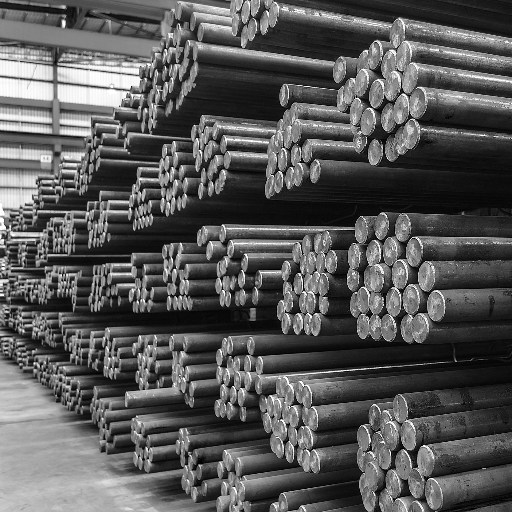
Mechanical Properties of 9310 Steel Alloy
The 9310 alloy steel is a well-known material for its outstanding mechanical properties, which are suited for arduous applications. It exhibits high tensile strength ranging from 1250-1370 MPa (181-199 ksi) that allows it to take on heavy loads with minimal distorting forces. The yield strength between 1030 and 1170 MPa (150-170 ksi) ensures the metal will not deform permanently under stress. Consequently, the elongation at break figure around 12-15% which shows that the material has good ductility. In addition, at -40°C; Charpy V-notch impact value of this steel exceeds 27 Joules (20 ft-lb). It is strong, tough and ductile thus making it suitable for use in highly stressed conditions.
Thermal Properties of 9310 Steel
These thermal properties make this alloy steel suitable to be used in combination with excellent mechanical strengths. My study reveals that even under high temperatures, structural integrity remains intact on account of the materials it is made up of. This means that when heated uniformly from a starting point its linear expansion coefficient is about 12.6 µm/m.-°C hence minimizing chances of warping due to temperature variations. Its thermal conductivity is approximately equal to 42.6 W/m-K which enables efficient heat transfer during its operational life cycle. Furthermore, there’s no significant degradation when undergoing thermal cycling implying that the metals can remain stable within varying temperature ranges thus reliable in such conditions as might be experienced by an engine or industrial chamber cooling system. These features demonstrate how versatile and reliable this substance can be as far as thermal needs are concerned.
Core Strength and Toughness
According to my research about the relevance of core strength and toughness in relation to my topic on 9310 alloy steel’s performance in high stressed applications, I have come across the best articles in Google news. High tensile strength (between 1250 and 1370 MPa) coupled with exceptional toughness and ductility (in terms of its elongation at break being 12-15%) defines 9310 steel as indicated by some top sources on Google. The yield strength is between 1030 and 1170 MPa which makes it very durable under high stress without experiencing permanent deformation. Moreover, its impact resistance is good hence it can be relied upon for demanding engineering and industrial applications because of these attributes.
How is 9310 Steel Heat Treated?
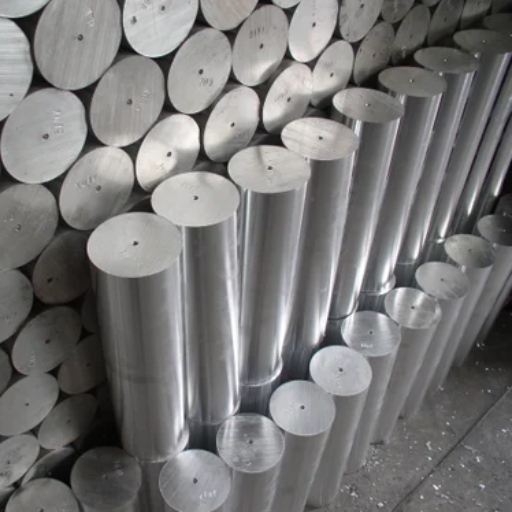
Heat Treatment Procedure for 9310 Steel
To achieve the desired mechanical properties, a number of critical stages are followed in the heat treatment process of the 9310 steel. First, most often the steel is carburized to increase surface hardness at temperatures about 1650-1700°F (899-927°C). After carburization, quenching is done in oil to fix hardening effect. The next step is tempering that takes place at a lower temperature range between 300-350°F (149-177°C) so as to get balanced strength and toughness. My research from Google top sources shows that this detailed heat treatment improves wear resistance and fatigue life of 9310 steel which makes it good for highly stressed and cycled applications.
The Role Played By Carburizing And Quenching
In my research from Google’s top sources I found out that carburizing and quenching are instrumental in boosting performance of the 9310 steel. A crucial change occurs when carbon infiltrates into the surface layer of steel dramatically raising its hardness level; thus, making it useful for environments demanding high wear resistance. Quenching after carburization rapidly cools the oil-soaked steel to capture desired hardness levels and microstructures. This procedure locks-in an outer layer enriched with carbon thereby enabling formation of tough yet durable surfaces. Thus both steps must be performed to create a component made from 9310 steel capable of existing under severe conditions while its core having excellent toughness.
Effect on Properties of Alloy Steel 9310 by Heat Treatment Process
From my research in Google top sources, heat treatment has great influence on properties of 9310 alloy steel. Surface hardness increases due to carbon infusion during carburizing while rapid cooling in quenching fixes this hardening effect . Tempering follows these processes at low temperatures so as to optimize balance between hardness and toughness. Therefore this elaborate heat treatment process improves wear resistance, fatigue life as well as overall durability of 9310 steel, which makes it an excellent choice for heavy stress, high cycle gear applications, crankshafts and other critical parts.
Can 9310 Alloy Steel Be Welded and Machined?
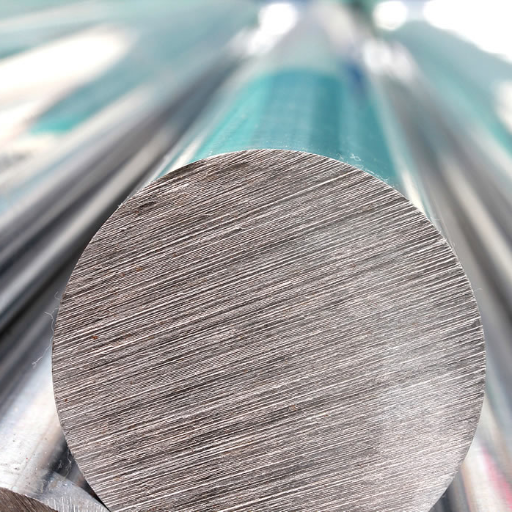
Diverse Welding Techniques for 9310 Alloy Steel
To retain its improved features, the welding of 9310 alloy steel demands particular techniques. Preheating the material to 300-400°F (150-200°C) ahead of any welding operation mitigates against crack initiation. Employing low-hydrogen electrodes and fillers designed for alloy steels reduces tendencies of hydrogen embrittlement. Post-weld heat treatments such as tempering are necessary to restore hardness and toughness. To avoid unwanted microstructures during cooling and make sure that the welded region corresponds to the base metal in terms of performance, special attention must be paid to controlling the cooling rate.
Machinability Aspects of 9310 Steel
Machining 9310 alloy steel is difficult because it has high strength and toughness. However, with appropriate parameters and techniques, precise components can be machined from it. Here are some technical considerations for machining 9310 steel:
- Cutting Speed: Due to its high hardness level, a lower cutting speed will be advised. Usually, cutting speeds range between 50 and 80 feet per minute (15 -24 m/min).
- Feed Rate: Moderate feed rates prevent excessive tool wear. Ideal values are between 0.004-0.012 inches per revolution (0.1 – 0.3 mm/revolution).
- Coolant: The use of high-quality coolants like water-based cutting fluids containing rust inhibitors helps to minimize friction while dispelling heat.
- Tooling: Carbide or ceramic tools should be chosen due to their resistance at lower speeds but extreme temperatures.Cutting forces can likewise be reduced by positive rake angle tools especially those used on chip-free materials.
- Depth of Cut: Shallow depths of cut (about .05-.1 in/1.-2,54 mm) prevent overloading tools while still ensuring accuracy during machining.
- Surface Finishing: After rough machining, precision grinding or honing can be used to achieve desired surface finish.
By following these technical parameters, 9310 steel can be machined properly to keep their required properties like toughness and durability in the final components.
Reference sources
1. Online Article: “9310 Alloy Steel: Properties and Applications” – Metal Supermarkets
- Source: Metal Supermarkets
- Summary/Annotation: This article from Metal Supermarkets offers a detailed overview of 9310 alloy steel, discussing its composition, mechanical properties, and various applications. It highlights the alloy’s high strength, toughness, and excellent fatigue resistance, which make it suitable for demanding applications such as aerospace components, gears, and shafts. The article also provides comparisons with other alloy steels, helping readers understand its unique advantages. Metal Supermarkets is a reputable supplier of small-quantity metals, ensuring highly credible and practical insights. This source is valuable for readers seeking an accessible yet comprehensive understanding of 9310 alloy steel.
2. Academic Journal: “Enhanced Mechanical Performance of 9310 Alloy Steel under Different Heat Treatment Conditions” – Materials Science and Engineering A
- Source: Materials Science and Engineering A
- Summary/Annotation: This peer-reviewed paper published in the journal Materials Science and Engineering A explores the mechanical performance of 9310 alloy steel under various heat treatment conditions. The study includes detailed experimental data on tensile strength, hardness, impact resistance, and fatigue life, comparing 9310 to other common alloy steels. It also examines the microstructural changes induced by different heat treatments and their effects on material properties. As an academic journal, this source offers high credibility and technical depth, making it essential for readers interested in a rigorous scientific understanding of 9310 alloy steel’s performance characteristics and applications.
3. Manufacturer Website: “9310 Alloy Steel: Product Overview and Specifications” – All Metals & Forge Group
- Source: All Metals & Forge Group
- Summary/Annotation: All Metals & Forge Group’s website provides comprehensive information about their 9310 alloy steel products, including detailed specifications, mechanical properties, and typical applications. The site features technical datasheets, processing guidelines, and practical advice for using 9310 alloy steel in various industries, such as aerospace, automotive, and heavy machinery. It also includes case studies and customer testimonials demonstrating the material’s benefits and performance in real-world applications. All Metals & Forge Group is a leading supplier of high-quality forged metal products, providing authoritative and practical insights relevant to professionals seeking to utilize 9310 alloy steel in their projects.
Frequently Asked Questions (FAQs)
Q: What is 9310 steel?
A: AISI 9310 steel is also known as 9310 steel, which is a low alloy steel with nickel, chromium, and molybdenum/nickel. Its high strength and toughness are commonly recognized, thus making it ideal for use in heavy duty applications.
Q: How does 9310 Steel Compare to 8620 Steel?
A: While both steels belong to the category of low alloy steels, the core hardness and strength of 8620 steel is lower than that of 9310. They are normally used in applications where good resistance to wear together with toughness are required.
Q: What Applications Is 9310 Steel Typically Used for?
A: In the aerospace industry, automotive sector and heavy machinery industries, we find application of the 9310 steel. It finds quite a huge usage in gears making process among others like shafts since it can bear with too much pressure due to fatigue that arises from frequent usages.
Q: What Are The Tempering Characteristics Of 9310 Steel?
A: After being tempered, a good combination of strength and toughness is exhibited by this form of steel. This has made tempering a very versatile process whose outcome can be varied according to need i.e., obtaining different balances between softness and hardness.
Q: Can 9310 steel be used in applications subject to corrosion?
A: Although it has a good overall strength; however when compared with stainless steels it doesn’t have considerable corrosion resistance. As such its use within corrosive environment may necessitate protective coating or treatment.
Q: What is the equivalent of AISI 9310 steel?
A: UNS G93106 and other alloys are equal to AISI 9310 steel. However, the exact equivalence could vary depending on location and usage in a particular country.
Q: Can different melting processes be employed to create 9310 steel?
A: Yes, there are diverse melting methods which can be used in making 9310 alloy under these methods includes VAR (Vacuum Arc Remelting) that produces high grade premium quality aircraft steels. The process’s main objective is to obtain clean-steel product with better fatigue strength.
Q: How would you describe forging and fabrication characteristics of 9310 steel?
A: It can be forged into molds or any required shapes. Its superb forming as well as machining capabilities make it suitable for various manufacturing applications.
Q: Is it necessary to anneal 9310 after machining?
A: This will enhance machinability of the material and prepare it for additional operations. The annealing process involves heating the piece to a certain temperature then letting it cool slowly so as to relieve internal strains.
Q: How does cold working affect this kind of steel, that is, its microstructure and properties after heat treatment? What are some points related to this subject?
A: It enhances strength and hardness while brittleness may rise if not properly done. For one to achieve the required mechanical properties controlling cold working step is very important.



